Introduction:
The warping process involves transferring yarn from a set number of tubes, cones, or cheeses on the creel onto a warper’s beam or weaver’s beam during weaving preparation. It entails preparing a weaver’s beam, which is set up on the weaving machine’s back, or several packages called warper’s beams, which are then sent to the next process called sizing. Warping of yarn is one of the most essential processes in textile manufacturing, specifically in weaving. The weaving process involves the precise arrangement of yarns on a warping machine to form a warp beam, which will be used as the primary source of yarn during the weaving process.
Components of warping machine:
Typically, a warping machine has three main components in order to work properly:
- Creel
- Headstock
- Control device
1. Creel:
During the warping process, the creel of a warping machine plays a crucial role in ensuring smooth and efficient yarn supply. In addition to providing tension control, it is a structure that holds and organizes yarn cones or packages. The creel’s design facilitates easy access to and monitoring of the yarn supply, facilitating timely intervention in case of problems. It is versatile and adjustable, accommodating various yarn types and sizes. In addition, the creel optimizes space utilization in the warping setup and is often designed ergonomically to reduce physical strain on operators. Minimizing downtime for yarn replacement and ensuring a continuous supply of yarn for weaving contributes to the warping process’s overall efficiency and productivity.
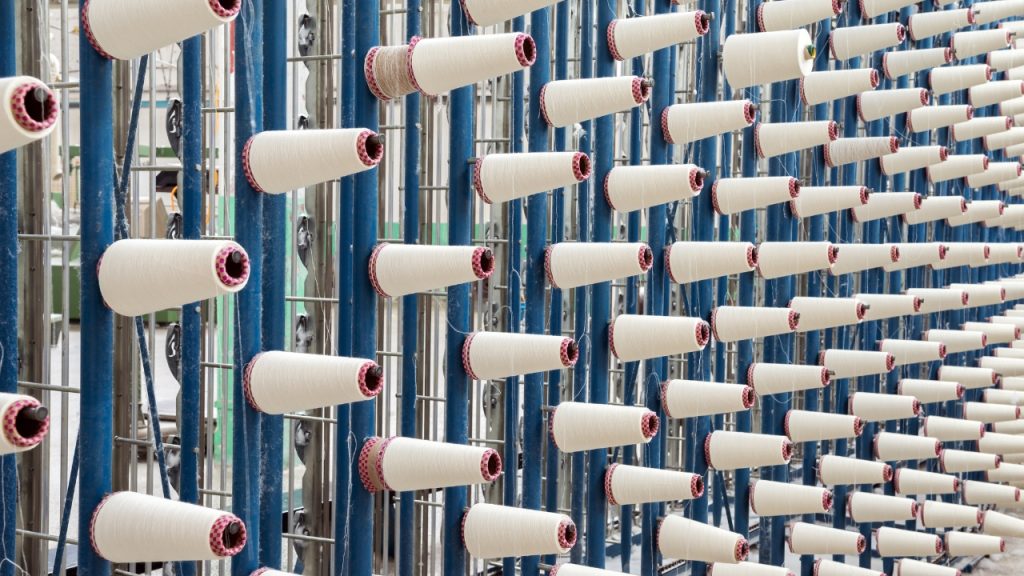
Function of creel:
A creel is a fundamental part of the warping machine in the textile industry. During warping, it ensures a continuous and controlled supply of yarn by holding and organizing yarn cones or packages. There are several key aspects and functions of the creel in a warping machine:
- Yarn Support: Creels support yarn cones or packages. It typically looks like a rack with many levels or rows where yarn is stored. There are different levels on the creel, which allows for efficient organization and accessibility of yarn cones or packages.
- Tension Control: Creels also help maintain proper yarn tension. To ensure consistent tension across the yarn supply, tensioners or tension disks may be incorporated within the creel. For high-quality warp beams, uniform yarn tension during the warping process is crucial.
- Yarn Path Guidance: The creel guides the yarn from the cones or packages to the warping machine. Creel consists of guides or eyelets through which yarn is threaded, ensuring the yarn follows a precise path and remains aligned.
- Yarn Monitoring: As the yarn is arranged on the creel, operators can easily monitor the yarn supply. Using a visual inspection, they can identify potential issues such as tangles, yarn breaks, or yarn defects in the yarn cones or packages. It facilitates timely intervention and ensures the smooth operation of the warping machine.
- Versatility and Adjustability: Various types of yarn cones or packages can be accommodated by creels. It may have adjustable spindles or pegs that accommodate different sizes and shapes of yarns. Customization is possible by adjusting the yarn specifications or the production needs based on this flexibility.
2. Headstock:
Modern headstocks are equipped with advanced design features like precision direct drive, sophisticated electronics, smooth doffing, and programmable breaking. An automatic hydraulic doffing can be accomplished by pressing a single button. Programmable pneumatic braking will provide a constant stopping distance depending on the machine’s operating speed or the diameter of the beam. The length of the yarn wound on the beam is controlled by a measuring roller and a counter device which keeps track of the length of the yarn. In order to control the density of the yarn, tension, pressure, or a combination of both can be used. There is usually a higher density of yarn when a friction drive is used. To control the density of yarn in the spindle drive, yarn tension, and a hydraulically activated pressure roller are used. Some headstocks are designed to run more than one beam width simultaneously.
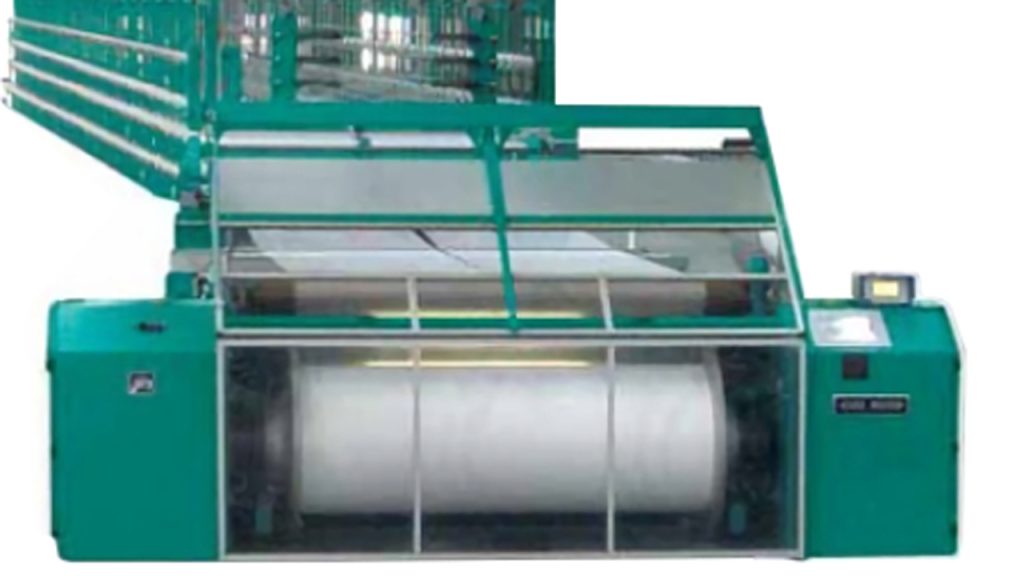
Function of headstock:
During warping, the headstock holds the warp beam and provides rotational motion. The headstock facilitates the controlled and organized winding of yarn onto the warp beam. In a warping machine, the headstock performs the following functions:
- Warp Beam Support: The headstock securely holds Warp beams in place. A warp beam is typically aligned and supported by bearings, shafts, and locking mechanisms during winding. It is crucial to maintain even tension and prevent misalignment or instability.
- Motion in rotation: The headstock provides rotational motion to the warp beam. It may have a motor or drive system that allows the warp beam to rotate at a desired speed. In this way, the yarn is wound evenly and uniformly onto the warp beam, resulting in a well-organized warp sheet.
- Controlling tension: A tensioning mechanism is often installed on the headstock, enabling yarn tension to be adjusted and controlled while winding. Throughout the warping process, tensioning devices, tension disks, or tensioning arms ensure consistent and appropriate tension. To achieve a high-quality warp beam, tension control is essential.
- Auto Doffing: An automatic donning system is Among the many features available on today’s headstocks. The automatic hydraulic doffing can be completed with a simple button push. In this way, it makes it possible to reduce downtime and increase the production of warping sections.
- Control length: The pneumatic braking system can be programmed to provide a constant stopping distance regardless of the operating speed or the beam’s diameter. The length of the yarn wound on the beam is controlled by means of a measuring roller and a counter device.
3. Control device:
A warping machine is similar to a winding machine in that it has a few components. The following are some of the points they mention: Tension device, Stop motion, Leasing rods and Reed
- Tension device: There is a need for uniform tension in order to ensure that all the warp ends behave in the same way. It is important to keep the tension of the warp yarns as low as possible. Each end of the package requires a tension controller that is usually located close to the package in order to control the tension.
- Stop motion: It is necessary to stop the beam rapidly and with advanced stop motion for warping. As the beam is highly inertia, it is difficult to stop it suddenly once it has been broken. However, it must be stopped before the broken end reaches the beam. The stop motion electrically links each warp end to the warper braking system; when a warp end breaks, the warper stops. The broken end is identified by a light. In general, warping is irreversible, unwinding of the beam would result in yarn entanglement. The stop device, which is usually located near the creel, is either mechanical or electronic for quick response.
- Leasing rods: An arrangement of yarn threads is created using leasing rods, which are rigid metal bars or rods. To ensure correct alignment and prevent the yarn from tangling or crossing during weaving, the individual yarn ends are separated and grouped into sections during the leasing process.
- Reed: The reed is a comb-like component in a warping machine that is responsible for maintaining the proper spacing and tension of the warp yarns during the warping process. On a metal or wooden frame, teeth or dents are spaced at regular intervals.
Function of control device:
An essential component of the warping process is a control device or control system, which regulates and monitors various aspects. A control device in a warping machine ensures the smooth and efficient operation of the machine by giving the operator control over various parameters. Here are a few of its key functions:
- Tension control: The control device enables precise control and adjustment of yarn tension during the warping process. In this way, the yarn tension is maintained consistently and uniformly across the yarn, resulting in warp beams of high quality. The operator can set the desired tension level and monitor it throughout the warping process.
- Stop and Emergency Functions: A warping machine’s stop and emergency functions are critical safety features that stop the machine immediately in the event of an emergency or safety concern. By implementing these functions, operators are protected, accidents are prevented, and machine and environment damage is minimized.
- Control beam width: There are lease rods and reeds that control the beam width. They also help in the scattering of yarn in individual vales.
Conclusion:
In the textile industry, warping machines are complex equipment that winds yarn onto warp beams efficiently and precisely. The warp beams have various components and functions that work together to ensure optimal performance. Each component of the warping process plays a crucial role, from the creel to the headstock, leasing rods, reed, and control device. In this article, I have provided an overview of the various components of warping machine straightforwardly. Thank you for reading the article, hope you enjoyed it
Reference:
- Adanur, S. (2001). Handbook of weaving. Boca Raton: CRC press.
- Belal, P. D. (2016). Understanding Textiles for a Merchandiser. Dhaka: LB Graphics & Printing.
- Hossain, M. S. (2014). Introduction to Textile Engineering. Dhaka: Books Fair Publications.
- Rahman, M. M. (2008). Fabric Manufacturing Technology. Dhaka: Books Fair Publications.
- V. Gordeev, P. V. (1982). Cotton Weaving. Russia: Mir Publishers Moscow.
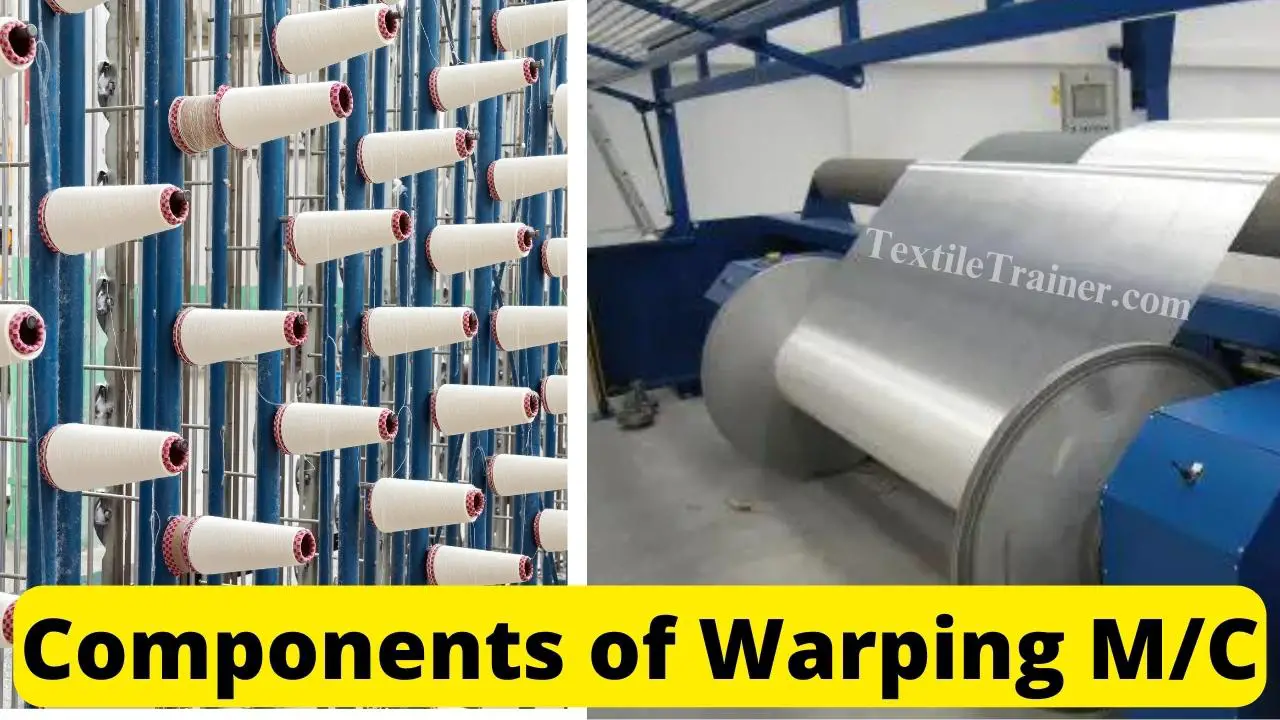

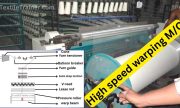
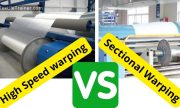
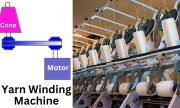
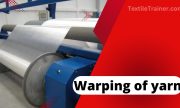

I think this is a real great blog. Much obliged.